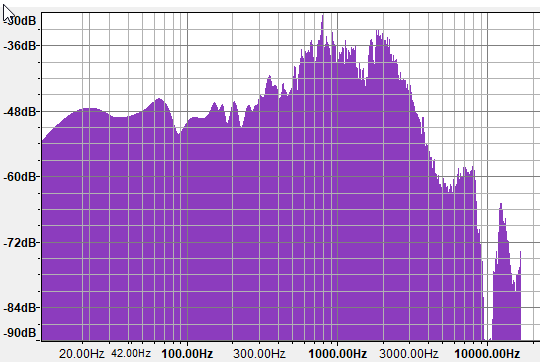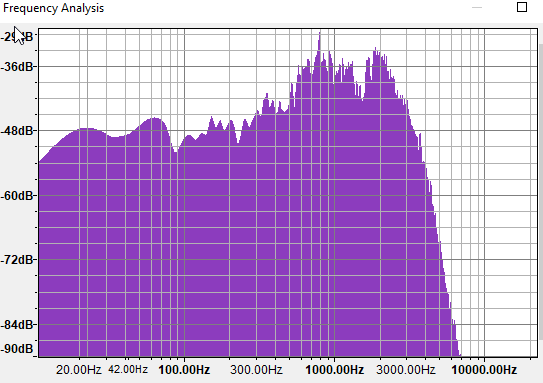For some reason my sound app is not working. It worked a week ago.
yeah - it worked for a short while and then stopped working. They have promised to fix it before long … BTW “sound…” is a web app running on a networked computer somewhere. The only part of the app that you have at your end is the browser interface.
This is correct. We are waiting on a fix from our FDSN provider.
hello,
this has been resolved, apologies for the inconvenience,
richard
OK - so now some audio filtering. (This was done with Audacity free-ware.)
If I have a spectrum up to, say, 48 Hz and speed it up 100x then there should be no frequency components above 4800 Hz. But, in fact, when imported it looks like this:

It’s not clear to me if the high frequency stuff is really in the sound track or generated by the input conversion process. It seems to me that the level is a bit high and that may be causing some artifacts.
You cannot overflow the floating point numbers that audacity uses internally but clearly the program considers the level in the MP4 → MP3 file to be >100% level

In any case, by applying a steep low pass filter at 4500 Hz you can clean it up to look like this:

at 50 and 25 times speed up, the corner frequency should be lower, of course.
If your data is contaminated with some continuous tones, you can apply some notch filters to make the final result much easier on your ears (not shown here, but very effective when needed).
Good Morning! I was wondering if you can share step by step how to import the file from the shake net or other applications.
What you see above is the special case of taking the MP4 (MPEG4) download from https://sound.raspberryshake.net/ and using Audacity to strip out (demux) the sound information from the file. Procedure is simple: download the MP4 from the sound web app and drop the file on Audacity.
This data is derived from an audio compression algorithm and may not be a 100% reproduction of the original data (although given the low sample rate of RS, it likely has every single point of the original data).
Importing data from the community server, or your archive files, is a more complex topic. The miniSEED format used to store the data can be accessed by a number of tools described elsewhere on this web site.
Ken